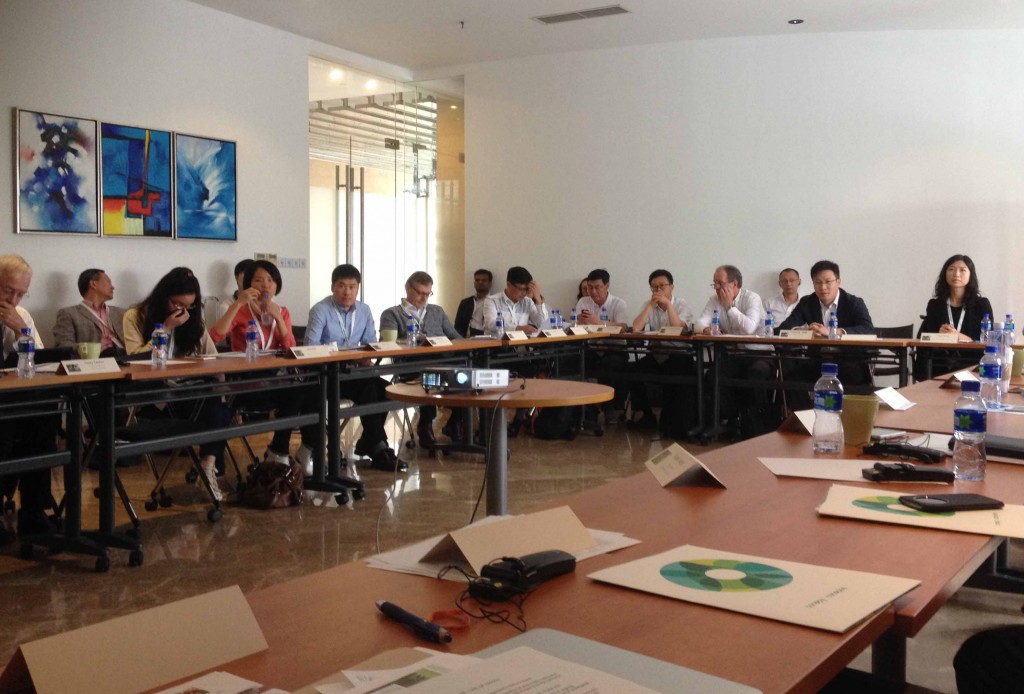Working together we will protect the forests
Published:
Author:
Amanda Carr
Campaign:
CanopyStyle
Type:
Blog article
Published:
Author: Amanda Carr
- Campaign:CanopyStyle
- Type: Blog article
 By Amanda Carr, Campaign Director
By Amanda Carr, Campaign DirectorWe all know that the majority of our shirts, pants and sweaters are “Made In China”. So when Canopy began our efforts to collaboratively find solutions to protect the world’s forests from ending up in clothing we knew it wouldn’t be long before our work took us to China, the land of massive production, pandas and bamboo.
Each year 70 to 100 million trees are logged to make dissolving pulp with 1/3 of this coming from the world’s ancient and endangered forests. North America, Brazil and Indonesia top the charts for the countries exporting dissolving pulp. Most of this pulp makes its way to China to be made into rayon and viscose fabrics.
So now, as I write this, I am sitting on a plane flying home from Shanghai where Canopy co-hosted an event with H&M, Inditex/Zara, M&S, Stella McCartney and Eileen Fisher. Clothing brands, retailers and designers with combined annual sales of $195 billion came together in support of this summit to engage seven of the top ten largest viscose producers, who together control just over 60 per cent of the entire global supply. The combined potential of all of the participants to protect our world’s ancient and endangered forests is powerful.
The challenge to Canopy was to make it clear to this room that collectively we have the influence, and that our world’s forests need their action. The first thought that struck me as I sat in the conference room was – ‘if only we could hold these meetings under the canopy of a dripping rainforest with bears lumbering by.’
And so the speakers began. First with H&M stating explicitly their commitment and requirement from their suppliers to avoid sourcing from ancient and endangered forests by 2017.
Added to this were panel presentations from Aditya Birla and Lenzing — the world’s largest viscose producers representing 40 per cent of the global market — who shared their commitments to not source from ancient and endangered forests. Both of them expressed a willingness to be third-party audited to verify these claims. Sateri, a viscose producer head quartered in Shanghai, sat close by nodding in agreement as they had just launched their wood sourcing policy in line with the objectives of the summit only 15 hours before.
UK retail giant Marks & Spencer (M&S) then gave a compelling presentation on the path they have taken to raise the bar on protecting our world’s remaining ancient and endangered forests from being cut for the production of their products; from soy, to palm and now on to viscose. They also spoke directly about landscapes in Canada and Indonesia where M&S supports conservation solutions.
Inditex/Zara closed the summit, summarizing their brand’s focus on this issue as a top priority and speaking to the value that Canopy has to offer to brands and producers in the room in terms of both policy development and implementation.
We weren’t meeting in a grove of towering forest trees, but perhaps even more inspiring is how, in just 20 short months, the forest had come to China. And not just through Canopy’s own words as we presented on various panels, but through the commitments and actions of others.
As simultaneous translation rattled on in my ear through a headset, I hoped all of these careful words of inspiration, innovation and hope could be understood by the many Mandarin speakers representing clothing brands and viscose producers. Canopy has not brought ancient and endangered forests to China on our own, but through remarkably powerful partnerships.









